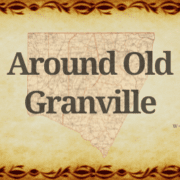TownTalk: Around Old Granville: Cemetery Preservation In Warren County
We’ve probably all seen them dotting the landscape: small cemeteries – fenced or not – that appear to pop up in odd places along the roadside. But there probably many more gravesites that we don’t see in our daily travels – they may be overgrown with weeds, or shrouded in wooded areas well off the road.
Local historian and genealogist Emerson Foster hunts for this type of cemetery. But he doesn’t’ stop when he’s found one – he goes to great lengths to clean it up.
“I see a lot of these graves with headstones falling over and in disrepair,” Foster said on Thursday’s Around Old Granville segment of TownTalk. Along with a handful of his genealogy friends, Foster said they try to right fallen headstones and clean them up.
These are largely family cemeteries, and Foster said he’s located numerous cemeteries in his search for where his own ancestors are buried.
“The last cemetery we went to was the Green family cemetery” in the Snow Hill area of Warren County, Foster told WIZS’s Bill Harris and Mark Pace.
He has relatives that belonged to the Greens that descended from Thomas Edward Green, he said.
As the older members of a family die off, Foster said, the locations of some of these family cemeteries gets lost, so Foster relies on information from relatives or others who may live near a cemetery to help him locate them.
The Green cemetery has 35 graves, five of which were where children are buried. But there was only one marker with the name “Davis,” he said. “Everybody else is marked with field stones.”
Undeterred, Foster used death certificates to confirm which people are buried in that particular cemetery. The death certificates contain names, dates of birth and death – and where the body was buried.
“They all said ‘buried at Green family cemetery,’” he noted.
He located another cemetery after speaking with a woman who lives across the road from where he suspected the cemetery to be. “She pointed us in the right direction. We just kept walking until we found it – it’s deep in the woods,” Foster explained.
He’s been at this for four or five years, and he said he always looks forward to the fall – that’s prime walking-in-the-woods-weather – fewer bugs, too.
These sometimes forgotten cemeteries often are on private property, so Foster recommends trying to locate the owner and request access to the property.
“A lot of these older cemeteries that are way out in the woods, (the landowner) is not even aware that there’s a cemetery there,” he said.
CLICK PLAY!

